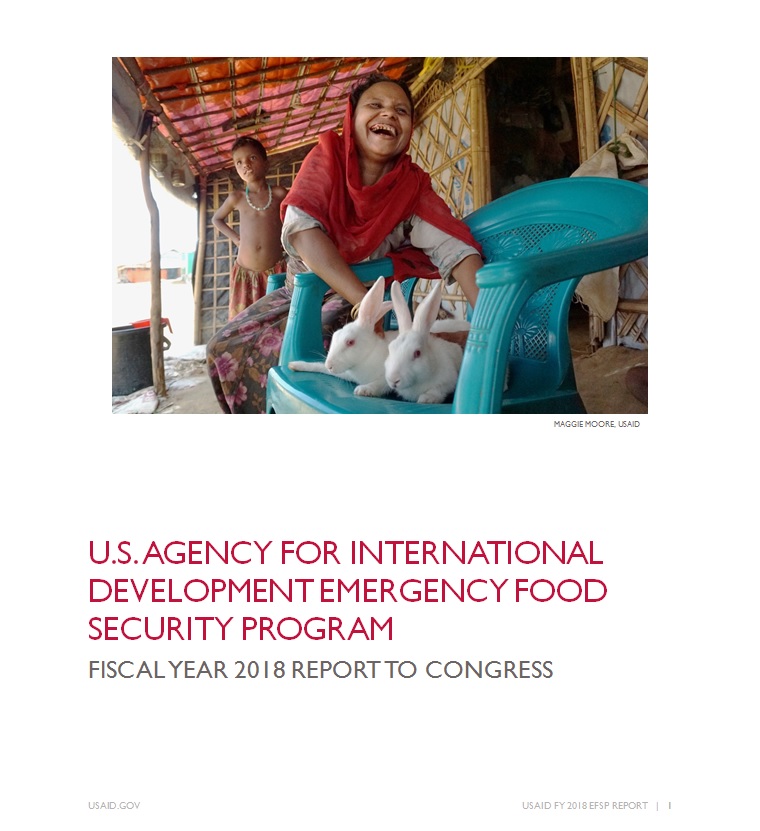Speeches Shim
U.S. Agency for International Development (USAID) Emergency Food Security Program Fiscal Year 2018 Report to Congress
USAID submits this report pursuant to the statutory requirement in Section 492(e) of the Foreign Assistance Act of 1961 (FAA) (Section 2292a[e] of Title 22 of the United States Code [U.S.C.]). The report describes how USAID used Fiscal Year (FY) 2018 International Disaster Assistance (IDA) funding, through the Emergency Food-Security Program (EFSP), authorized by Section 491(c) of the FAA, to address food-insecurity in emergency situations by applying market-based approaches, including local, regional, and international procurement (LRP); cash; and voucher assistance for food.
Purpose and Program Objectives
The USAID Office of Food for Peace (FFP) within the Bureau for Democracy, Conflict, and Humanitarian Assistance (DCHA) delivers two main types, or modalities, of food assistance: 1) food from the United States authorized in Title II of the Food for Peace Act, as amended by the Agriculture Improvement Act of 2018; and, 2) market-based food assistance and complementary services, authorized in the Foreign Assistance Act, as amended by the Global Food Security Reauthorization Act of 2017. USAID/DCHA/FFP began using market-based food assistance in FY 2010 through the International Disaster Assistance account, and the Global Food Security Act of 2016 (Section 7 of Public Law 114-195) formally authorized the initiative as the Emergency Food-Security Program in the Global Food Security Act of 2016 (Section 7 of P.L. 114-195). The Global Food Security Act states the purpose of EFSP is “to mitigate the effects of manmade and natural disasters by utilizing innovative new approaches to delivering aid that support affected persons and the communities hosting them, build resilience and early recovery and reduce opportunities for waste, fraud and abuse.” Congress reauthorized and extended EFSP through fiscal year 2023.
Market-based modalities include local, regional, and international food procurement, cash transfers for food, and food vouchers. USAID/DCHA/FFP determines which modality to employ in a given context using four criteria: market appropriateness, feasibility, project objectives, and cost. LRP has additional restrictions on the source and origin of commodities to ensure that USAID/DCHA/FFP activities reinforce developing markets to the greatest extent possible.


Comment
Make a general inquiry or suggest an improvement.